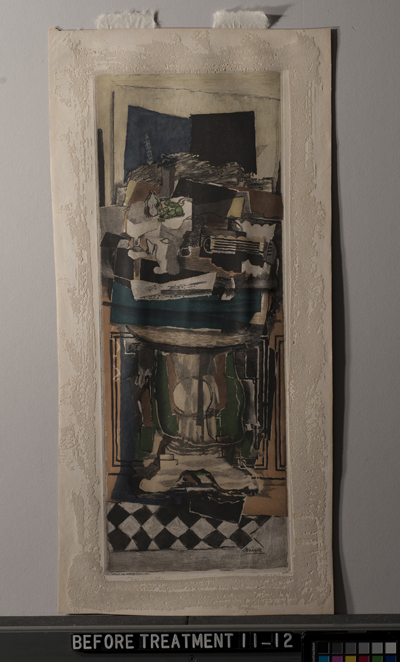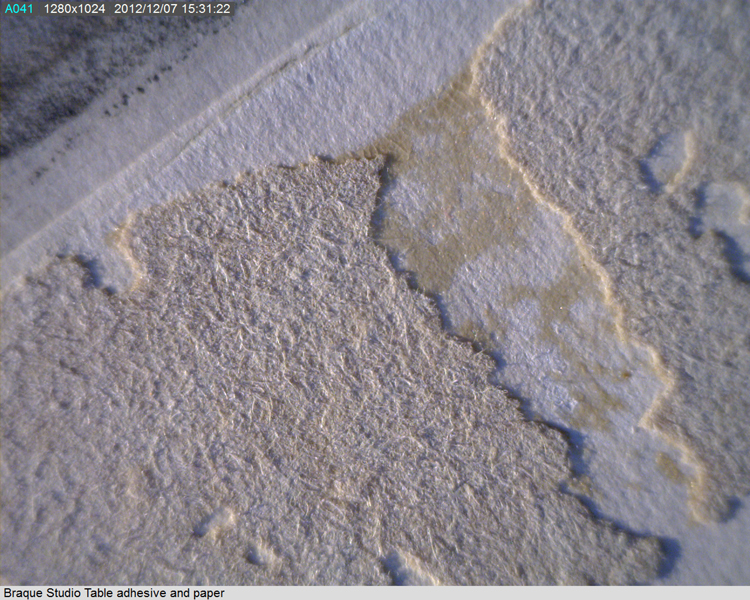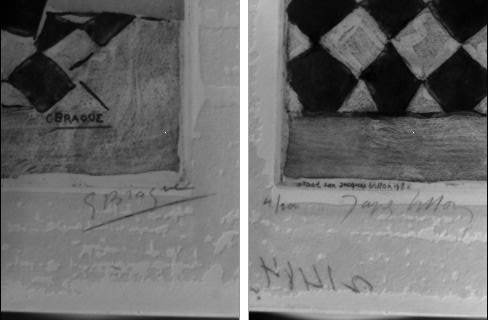
Print before treatment. Georges Braque, The Studio Table, 1923, Color aquatint on paper 23 x 8 1/2 in.; 58.42 x 21.59 cm.. Acquisition date unknown.
This etching and aquatint, The Studio Table (1923), was done on RIVES BFK paper by Jacques Villon, a significant printmaker during the early 20th century, in collaboration with Georges Braque. In 1922, the Bernheim Jeune dealers and publishers asked Villon to create a series of 40 intaglio plates after modern artists’ works. This print was the 4th pull in an edition of 200 made in 1923 after Georges Braque’s painting Guitar and Still Life on a Guéridon (1922) in the collection of the Met.
Villon used very advanced and complicated techniques to reproduce the texture and aesthetic of the paintings his prints represented. It appears that three plates with a total of seven different colors of ink were used; the registration holes that kept these plates lined up during printing are visible below. Two different techniques were used to create this work. One was etching, a process where a copper plate is covered with wax and then scratched into using an etching needle and bathed in acid to bite into these lines. Villon also used aquatint, a process where a layer of acid resistant particles is spread across the surface of the copper plate as the ground. The artist will use a stop-out varnish to allow the acid to bite around the particles for different lengths of time to create darker or lighter toned areas. A unique tool called a rocker was used to create the dashed line texture, which can be seen in the details below. Click on the thumbnails below to see details of the print.
There was a significant layer of adhesive that obscured the margins of the print. Using infrared imaging, we were able to see through the adhesive that both Villon and Braque signed the bottom of this print. In other editions, both artists did not sign the print, making the Phillips’ work particularly significant. The decision was made to remove the adhesive to show these signatures using a series of controlled steps that can be seen in more detail in the following posts. Read part two tomorrow…
Caroline Hoover, Conservation Assistant





